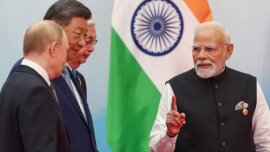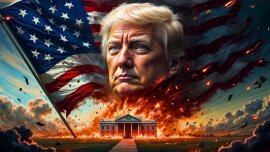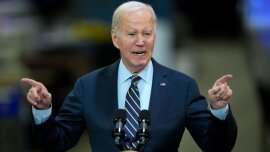In the previous part, the authors outlined the criteria that the new world monetary and financial system must meet:
- eliminate the crisis factors of the previous system;
- ensure the economic superiority of the Western cluster, stimulate its development and greater competitiveness;
- be network-centric, but maintain the leadership and guiding role of the United States.
***
There are four (non-mutually exclusive) scenarios for the reorganization of the global monetary and financial system.
1. “World money” - the creation of a supranational monetary unit, which should be issued by a supranational body.
2. “Sovereign money” - strengthening of sovereign centralized control over the money supply (for example, 100% reserves, as under the gold standard), which is accompanied by an increase in global monetary regulation through the IMF.
3. “Digital money” - the use of centralized and decentralized, secured or unsecured cryptocurrencies.
4. “Regional money” - the creation of currency unions and lowering the level of control over money issue from global to regional.
Based on the outlined criteria that the new world monetary and financial system must meet, we assume that the fifth scenario will be implemented - digital freely convertible currencies secured by central banks, circulating either within a single technical platform, or different but interoperable ones.
***
According to the Atlantic Council, 130 countries around the world are now exploring the prospect of creating digital central bank money. This is about 98% of world GDP. Today, 64 countries are already in the extended research phase (development, piloting or launch).
The National Bank of Ukraine announced a second experiment on the use of digital hryvnia (e-hryvnia) until the end of 2024. Anyone can take part in it.
The NBU conducted the first experiment on the use of e-hryvnia in 2018, becoming one of the first central banks in the world to begin testing the use of digital money.
Moreover, both developed democracies and autocratic openly cannibalistic regimes are introducing (or planning to introduce) digital money.
The Central Bank of Russia has allowed the use of digital money in international payments.
On the one hand, digital money has already acquired a certain background, ranging from a misunderstanding of the very essence of digital money to conspiracy theories. On the other hand, the paucity of information from authorized bodies and weak government communications contribute to this.
The Center for Strategic Communications and Information Security blamed the Moscow narrative on a blogger who suggested that digital money could be limited in terms of validity and area of use.
But the truth is that Moscow, Kyiv, Beijing, and Brussels are developing digital currencies and preparing the necessary regulatory framework (and it has already been implemented in Ukraine).
What is digital currency?
Central Bank Digital Currency (CBDC) is digital money issued by the government.
CBDC should not be confused with non-cash money, virtual currency, cryptocurrency, money surrogates or electronic money.
Despite the fact that CBDC is a de facto cryptocurrency, it has distinctive features:
- centralization – CBDC is issued purely by the central bank;
- openness - CBDCs are not anonymous, on the contrary - all transactions are fully traceable.
- programmability - the central bank can program the rules and restrictions on the use of currency, the contours of its circulation, validity period, etc.
What will the digital currency be tied to and will it be?
To answer this question, it is necessary to understand the motivation of the potentially main instigator of the introduction of a new monetary and financial system, namely, to ensure its superiority.
First, there is reason to believe that the digital currency will be “asset-backed,” primarily physical gold (or a metal basket).
Secondly, industry, and high-tech industry at that, so as not to give all the trump cards to China.
Thirdly, the countries of the Global South would like to be tied to natural resources and raw materials, but this will be contrary to the plan, since despotic regimes - Russia, Iran, Syria - will receive benefits. This means that the basis must be something in which the West feels its advantage. It could be some new type of energy.
Based on the assessment of these three components, exchange rates will be formed, which will be constantly calculated by a quantum supercomputer.
The main question is: why?
- irreversible development of technologies that make it possible to manage previously uncontrollable processes;
- reduction of transaction costs;
- crisis of the neoliberal model and capitalism in general;
- technical ability to limit overconsumption and excessive accumulation of capital;
- avoiding crisis bubbles;
- fight against the shadow economy;
- regulation of the economy.
What does the introduction of digital money give?
Targeted funding: Digital money will only be able to be spent on specific purposes, such as food, housing or education, and will not be able to be spent on alcohol or drugs. Such a system has long been introduced in the United States (food cards) and something similar was tried by Ukrainian refugees in Europe.
Automatic Payments: Smart contracts can be used to make automatic payments for goods or services once a certain condition is met. For example, your rent may be automatically deducted from your account every month.
Supply Chain Management: Programmable money can be used to track the movement of goods through the supply chain.
Creating New Business Models: Programmability opens up new opportunities to create innovative business models that were not previously possible.
Limiting excess consumption: strictly regulate the range of purchases, withdraw unspent balance, etc. The West has also already come up with a “system of voluntary consumption restrictions” - an unconditional basic income, but with the introduction of digital money, control procedures are simplified.
The excess resource accumulated in a system with limited consumption will, in fact, be a substitute for credit and used for economic growth.
Regulation of excessive accumulation of capital: capital not invested in the economy (most likely in the real sector) will “burn out”. Likewise, capital that is the result of illegal enrichment is of unknown origin.
Creation of several circulation circuits: for retail and for settlements with the budget or enterprises, or entire states, according to product range, etc.
Improvement of currency regulation: over time, commercial banks will no longer be needed - central banks will be able to independently perform all functions without unnecessary intermediaries.
Reducing corruption and debureaucratization: the introduction of digital currency will automate processes such as paying taxes, social contributions, and paying fines, which will minimize or even completely eliminate corruption, and accordingly radically reduce the bureaucracy.
Deoffshorization: Digital money can enable transparent competition between jurisdictions.
***
Digital Dollar Vs New Payment System
There are currently three powerful trends in public and professional discourse in the United States:
- launch of FedNow;
- continued study of central bank digital currencies (CBDC);
- evolution of Open Banking.
In 2023, the US Federal Reserve introduced a new instant payment service, FedNow. Now hundreds of banks are connected to the system.
FedNow offers not only 365/7/24 speed, but also functionality that cryptocurrency and blockchain advocates have long championed: making it easier to move money.
By continuing to use commercial banks as intermediaries, Fed officials previously said it would allow payments to be processed in seconds, which is already the norm in many other jurisdictions around the world.
At the same time, the Fed constantly emphasizes that “The FedNow Service is not associated with digital currency.”
The US Treasury Secretary also confirms this: “The FedNow service is neither a form of currency nor a step towards eliminating all forms of payment, including cash.”
At the same time, the US Treasury does not hide the fact that the United States is seriously considering the possibility of creating a central bank digital currency (CBDC).
And this is not just “considering the possibility”, but serious work. By decree of President Biden, a working group has been created that is developing the contours of a possible future financial architecture.
If FedNow is about the speed of payment processing, but with the preservation of the existing currency system, then the introduction of the digital dollar is, in fact, the establishment of a new world currency system following the example of Bretton Woods. And the central bank digital currency will have its own payment ecosystem.
However, the implementation of CBDC will come with several challenges:
- the fate of not only commercial banks, but also the commercial central bank, which de facto is the US Federal Reserve System;
- reformatting the principles of functioning of the global stock market;
- technical issues related to the circulation of cash;
- the position of Donald Trump, who said that he would not allow the creation of a digital dollar if he became President of the United States.
Conclusions:
1. Digital money is a synthesis of all world achievements in the field of administrative distribution of money, which has nothing to do with the classical free market.
The main risk for the consumer is that digital money lacks an important function inherent in ordinary money - they are not a means of accumulation due to their programmability.
2. The introduction of a new monetary and financial system will not be smooth and “seamless”, but rather, on the contrary, will be accompanied by a financial crisis, which the world may enter as early as 2025 due to the debt crisis of the United States.
3. This will mark the transition to post-capitalism. The decline of the credit economy will not mean the absence of loans, just as the transition from slavery did not mean the absence of slavery.
But capitalism as we remember it will become history. How liberal capitalism became history during the Great Depression, from which the world emerged through World War II.
4. The introduction of modern digital tools, in particular digital money, finally inverts Marx’s pyramid - now it is based not on economics, but on politics.
Roughly speaking, instead of industrialists and financiers, the elite become bureaucrats who distribute benefits.
5. In the era of the development of social networks and digital technologies, controlling human behavior is becoming a fairly easy task. This was perfectly demonstrated by the Covid infodemic.
Behavior is controlled using virtual instruments. In this case, the object of interest will be the results not of labor, but of social activity.
6. Building a digital society is an objective process, and you can only influence two things:
- speed of construction (you can bring this “wonderful” moment closer, or you can delay it);
- format (hard Chinese/Russian or soft conventionally Western).
7. The development of new technologies, be it artificial intelligence or digital money, is irreversible, and their implementation is associated with enormous risks for humanity.
Their use for good will depend entirely on whose hands they are in.
If this happens within the framework of a democratic world, then there is a minimal chance that the system of checks and balances will not allow a harsh scenario to follow.
8. There is a good chance that the “soft Western version” will be tested in Ukraine.
Authors:
Vladimir Shevchenko , political scientist, Doctor of Philosophy
Andrey Savarets , analyst, lawyer, author of telegrams for the “ Minority Opinion ”

























